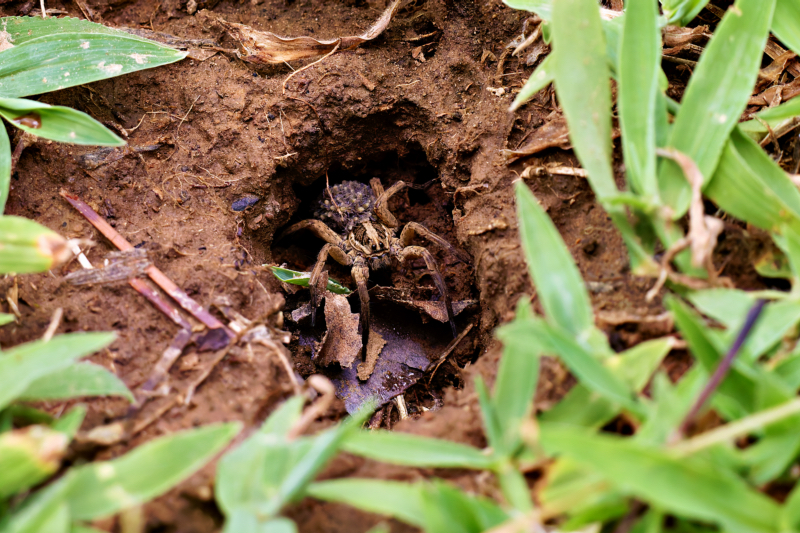While cleaning up fallen branches after a recent storm, I spotted something intriguing: a small hole in the ground, guarded by a spider. On closer inspection, I realized it was a wolf spider. Even more fascinating, she had dozens of tiny spiderlings clinging to her back.
This encounter led me to explore the remarkable world of wolf spider parenting, a behavior that’s as surprising as it is inspiring.

What Makes Wolf Spider Parenting Unique?
Maternal Care Like No Other
Wolf spiders are known for their exceptional maternal instincts, which set them apart from most other spider species. Unlike many arachnids that abandon their eggs, wolf spider mothers go above and beyond.
- Egg sac attachment: The female carries her egg sac using her spinnerets, never letting it out of sight.
- Active protection: She guards the sac fiercely and carries it even while hunting.
- Hatching assistance: When the time comes, she tears open the sac herself to release the spiderlings.
Spiderlings Hitch a Ride
Once the babies hatch, they instinctively climb onto their mother’s back, where they remain for several days. This visual is striking, at times, the mother is nearly hidden under a mass of spiderlings, with only her eyes peeking through.
Strength in Numbers
- A single female can carry over 100 spiderlings at once.
- The young spiders don’t eat during this time and rely entirely on their mother for transport and safety.
- If any fall off, the mother stops and waits for them to climb back on.
Survival Comes First
Wolf spider parenting is a strategy built for survival:
- Extended care increases the chances of the young reaching independence.
- No paternal support: The male does not assist in raising the young.
- Hunting ability retained: Even while carrying her brood, the mother can still catch prey.
- Self-sacrifice: She may go without food, putting her young’s safety first.
The Final Farewell
After about a week, the young spiders disperse and begin life on their own. While this marks the end of the mother’s direct role, her efforts have significantly boosted their chances of survival.
However, nature remains tough. Once on their own, stronger spiderlings may engage in cannibalism, eating weaker siblings to survive.

A Closer Look at Backyard Nature
Witnessing wolf spider parenting firsthand is both humbling and awe-inspiring. These dedicated mothers offer a powerful reminder of the intricate care found in even the smallest corners of the natural world.
So next time you’re in the yard or on a hike, take a moment to look closely. You might just spot one of nature’s most dedicated mothers quietly carrying her future on her back.
After learning about their incredible parenting behavior, you might still have a few questions about these fascinating spiders. Here are some quick answers to the most common ones:
Wolf Spider Q & A
Are wolf spiders good or bad?
Wolf spiders are actually beneficial. They help control insect populations by hunting pests like crickets, beetles, and flies. Even though their size and speed can be intimidating, they rarely pose any threat to people.
What should I do if I see a wolf spider?
The best thing to do is leave it alone. Wolf spiders aren’t aggressive and will usually retreat if given space. If one wanders inside your home, gently guide it into a container and release it outside.
Will a wolf spider jump on me?
No. Wolf spiders don’t jump onto people. They rely on quick bursts of movement to chase prey or escape danger, not to attack. Their first instinct when approached is to run and hide.
Where does a wolf spider live?
Wolf spiders live in a wide range of habitats — fields, forests, gardens, and even backyards. Many build burrows in the ground, while others shelter under rocks, leaves, or logs. You can often spot them at night when their eyes reflect light.

Very interesting and informative!